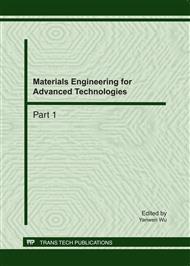p.1530
p.1536
p.1542
p.1548
p.1554
p.1559
p.1571
p.1577
p.1581
The Working Principle and Main Technical Factors Influencing on Finished Accuracy of Rapid Prototyping
Abstract:
Rapid prototyping (RP) is a digital manufacture technology based on discrete stacking technology. RP technology can be used to machine complex physical part directly from CAD data without any professional apparatus. The paper also summarized four main RP technologies, discussed the working principle and compared the application fields, machining cost and process parameters in detailed. Finally, the author prospected the significant performance of RP for modern industry, analyzed the merits and faults and indicates the development object for RP technology.
Info:
Periodical:
Pages:
1554-1558
Citation:
Online since:
June 2011
Authors:
Price:
Сopyright:
© 2011 Trans Tech Publications Ltd. All Rights Reserved
Share:
Citation:


